Charger Xtar VC2
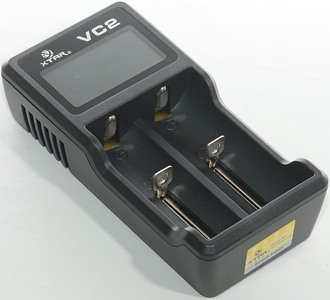
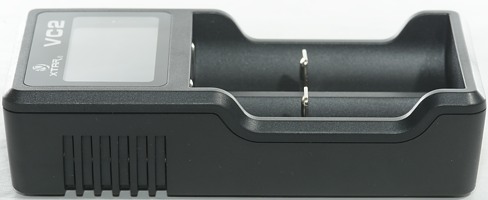
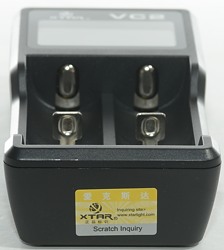
Xtar makes many LiIon chargers, this is a usb powered dual channel charger with display. The charger can charge with up to 0.5A for each channel, but the current is not user adjustable.
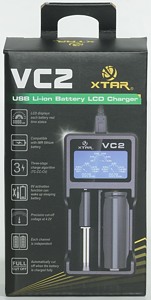

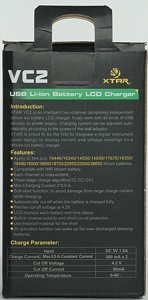

I got the charger in a small cardboard box with the specifications printed on it.

Inside the box the charger was in a small fabric bag, this can be useful if it is used as a travel charger.
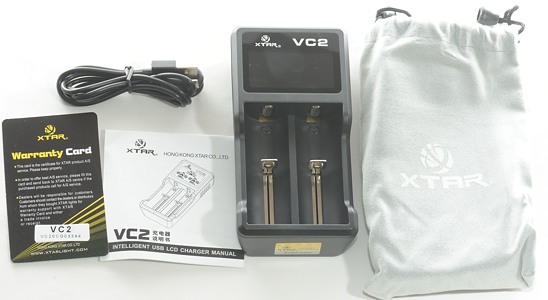
The bag contained the charger, a usb cable, a warranty card and a instruction manual.
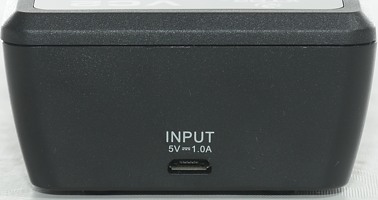
The charger is usb powered from a micro usb connector, but there is not a power supply included, i.e. you must supply your own usb power supply/charger. With a maximum charger current of 1A the charger works best with high power chargers, but will reduce its current if the power supply is overloaded.
I have tested a few usb power supplied.
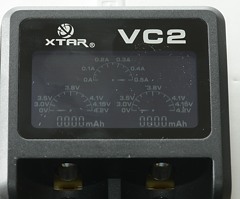
There is only a display as user interface, no buttons or switches.
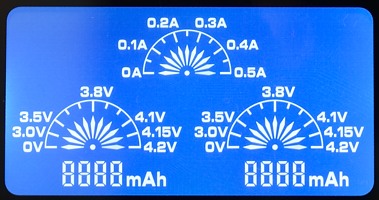
The display uses dials to show voltage and maximum current, it does also have some 7 segment digits to show charged capacity.
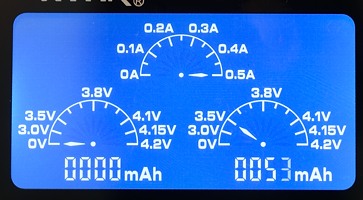
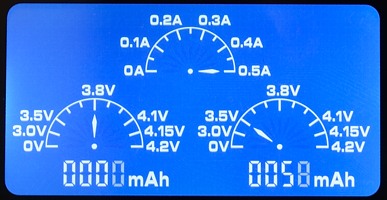
The current dial only shows the maximum charge current, the actual current is lower when the battery is in the CV phase.
The voltage dials shows the actual voltage when in range:
0V Battery voltage is low, charger is only using low current, display may show "Err" if there is a problem with the batteries.
3.0V Voltage is high enough to start regular charge.
3.5V-4.2V Regular charge, display is within 0.1 volt.
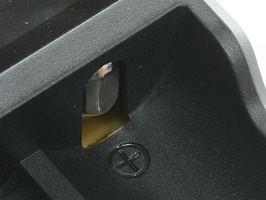
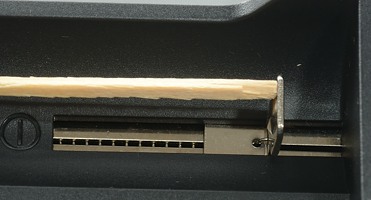
The charger can handle both button top and flat top batteries.
The slider moves smoothly and can hand cells from 30mm to 71 mm long.


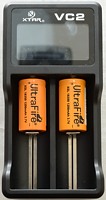
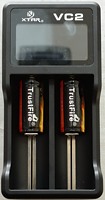
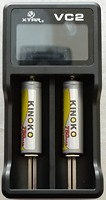
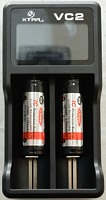
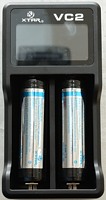
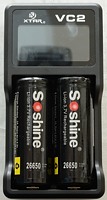
The charger can handle 71 mm long batteries, including flat top cells.
Measurements charger
- When charging the last digit in the capacity displays will flash.
- The charger will charge with 2.4mA from 0 volt and display will show "Err"
- At 0.2 volt it will start charging with 340mA (It will be down to 180mA 2.9 volt) at and display will show mAh.
- At 2.9 volt regular charge current will be applied.
- When charging two batteries with reduced current, they may not charge at the same speed.
- When charge is finished the charger will charge with 0.3mA.
- Charger will restart if voltage drops to 3.9 volt.
- Charge will restart charging after power loss, or battery insertion.
- When not connected to power it will drain about 0.1mA from a battery.
- Current dial will show maximum possible charge current, not actual charge current.
- Charge current steps down if usb voltage drops too much and may step up if usb voltage recovers (Like when one slot is finished).
- Voltage dial will show within 0.1 volt when voltage is above 3.5 volt, between 4.1V and 4.2V is does also have a 4.15V position.
- Voltage dial is within 0.1 volt when voltage is above 3.5 volt.
- The 3 volt position on the voltage dial looks like it signals "start of regular charge", i.e. 2.9 volt.
- mAh display flashes "Full" when the corresponding battery is full.
- The background light will flash when at least one battery is full.
The light green line is usb current consumption, the dark green is charge current.
%20%231.png)
The charger does a nice CC/CV charge with a termination at about 50mA. There is some oscillation during the final part of the charge, but it does not affect the result.
The display shows 2918mAh charged into the battery.
%20%232.png)
The other channel has a similar result.
The display shows 2932mAh charged into the battery.
%20%231.png)
The 2600mAh battery has a very long CV phase, probably because it is getting old.
The display shows 2549mAh charged into the battery.
%20%231.png)
The 3400mAh takes slightly longer to charge.
The display shows 3254mAh charged into the battery.
%20%231.png)
The charger has no problem with my old IMR cell.
The display shows 177mAh charged into the battery.
%20%231.png)
The display shows 715mAh charged into the battery.
%20%231.png)
The display shows 784mAh charged into the battery.
%20%231.png)
Supplying a falling voltage to the charger shows that the current regulation works at around 4.7 volt. When the voltage gets below 4.7 volt the charger will start reducing charge current, until the voltage is above 4.7 volt again. If this does not happen the charger will stop completely.
%20%231.png)
To see the current limiter in function I put a 1ohm resistor in series with the power supply, this simulates a fairly bad usb power supply.
As can be seen the charge current is reduced, but the cell is fully charged.
The display shows 2791mAh charged into the battery with 0.3A current.
.png)
With two batteries and 1ohm in series with the power supply the charger has to limit the current even more. This shows that the two channels is not balanced, there is a significant difference in charge current (This cannot be seen in the chart). After 23½ hour the mAh count was 2088 and 2746. When the second cell finished (At 1500 in the chart), the first cell was charged at a much higher current.
The display shows 2846mAh and 2904mAh charged into the battery with 0.1A current.
.png)
With two batteries and a stable 5 volt power supply the charger will use about 500mA for each battery when charging.
The temperature raise is very limited.
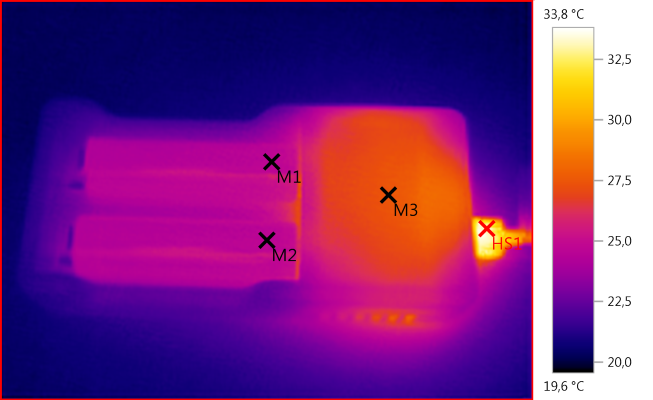
M1: 24,8°C, M2: 24,7°C, M3: 27,4°C, HS1: 33,8°C
There is no doubt about where the heat generation is, but actual temperature shows that it is a insignificant heat generation.
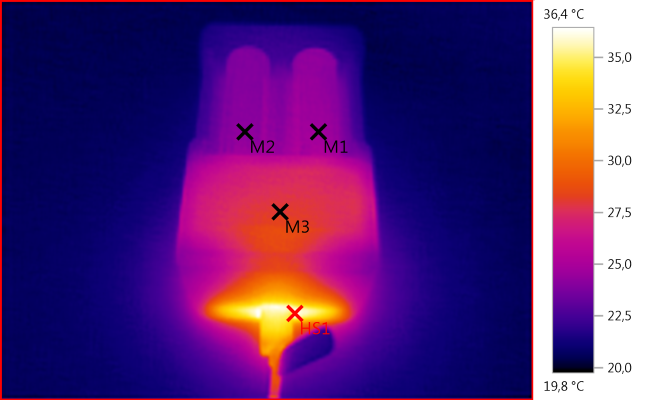
M1: 24,7°C, M2: 24,3°C, M3: 28,0°C, HS1: 36,4°C
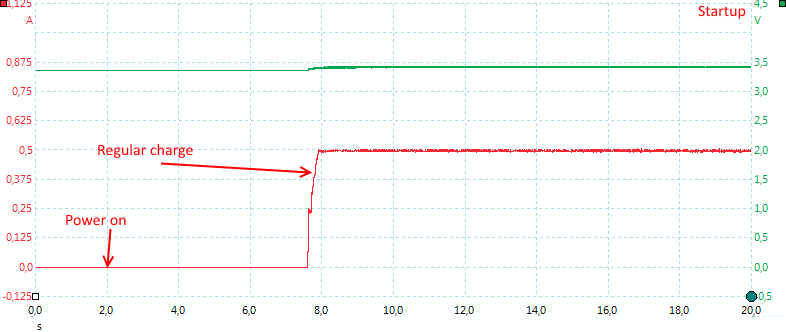
The charger needs about 6 seconds to start.
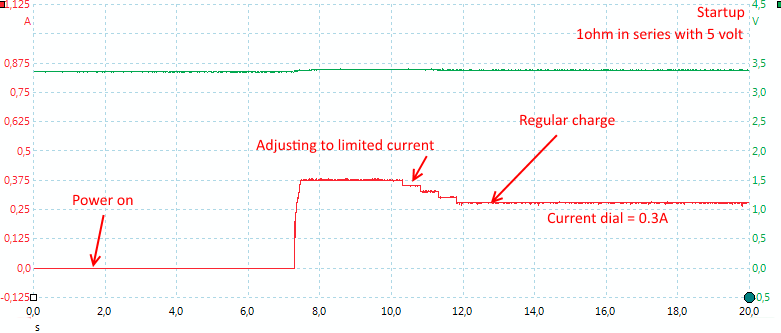
But if the power is limited it will use some more time to adjust the charge current.
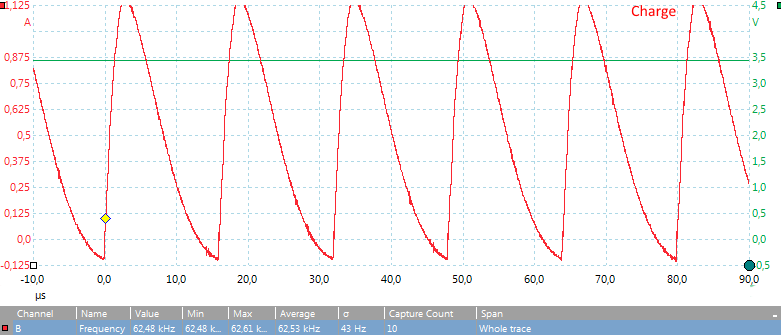
The scope traces looks very smooth, but that is only because I filters them. The charger is using a unfiltered 62kHz charge current.
.png)
When current is reduced the charge will dynamically adjust the current.
Because the charger is supplied from usb power there will not be any safety issues with it, but be careful with the usb power adapter.
Conclusion
The actual charging is very good, but is a bit slow or very slow, depending on the usb supply used. The charger can draw a lot of current from the usb port, it will not be a problem with most usb chargers and power banks, but I wonder how a PC usb 2 ports will handle it.
The charger is a nice for car and travel usage and can also be used at home, but it is a good idea to find a power supply that can supply enough current and voltage for full charge speed. Remember to use a short cable between power supply and charger to avoid slow down due to losses in the cable.
I will call it a good charger.
Notes
The charger was supplied by XTAR for a review.
Here is an explanation on how I did the above charge curves: How do I test a charger